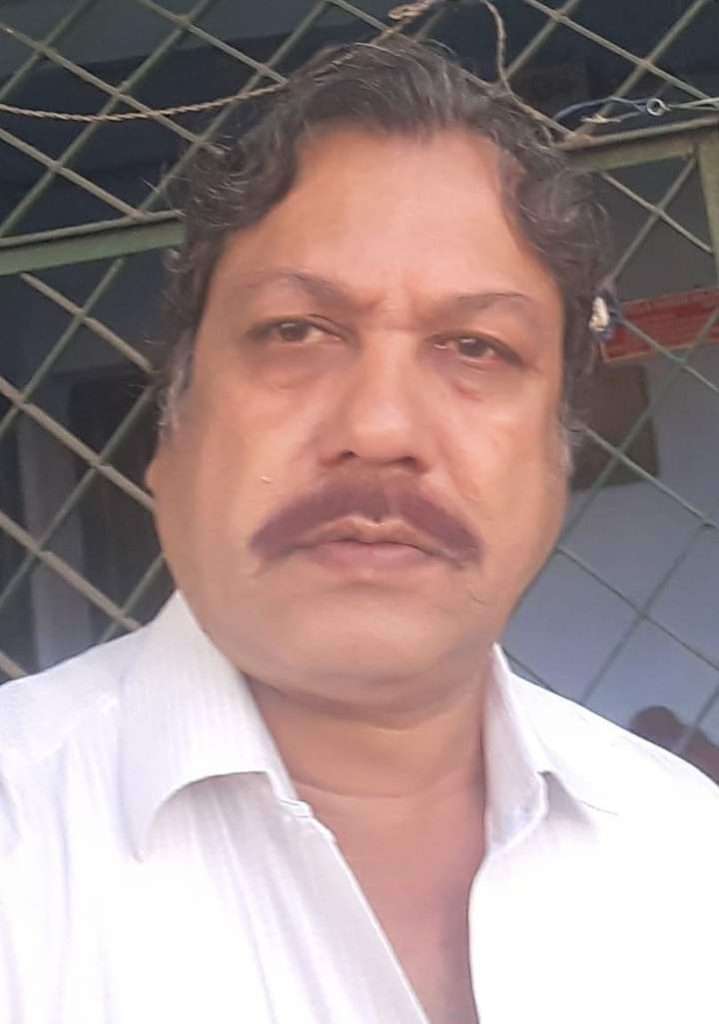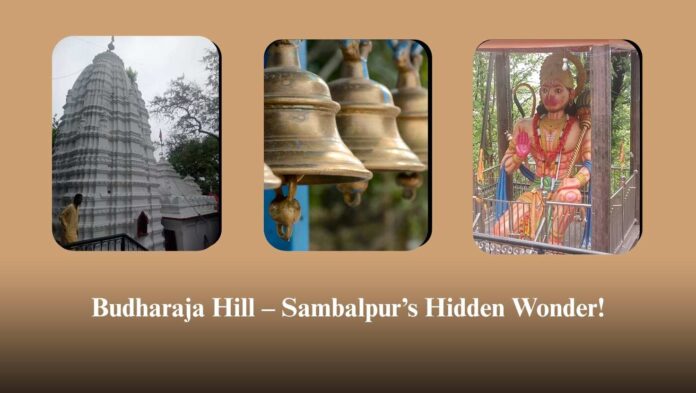Approximately 272 kilometres from Bhubaneswar, the capital city of Odisha, Sambalpur in the western part of the state is a growing modern and bustling city with a rich culture dating back its history to the hoary past when the region around Sambalpur was known as ‘Hirakhand’ because of its diamond mines. The city has been referred to as ‘Sambalaka’ by Ptolemy, the Roman geographer of the 2nd century AD. The present city was founded by Balaram Dev with Devi Samaleswari as its presiding deity in the year 1570 AD. During the last twenty–twenty-five years, the city has grown in size with its new residential buildings and marketplaces. But its old-world charm and culture have remained intact. We can see an array of medieval temples and structures in the old city area of Sambalpur. There are also hills within the city area like the Brooks Hill and the Budharaja Hill which add to its beauty.
Budharaja – The Budharaja hill with thick tree cover is centrally located within the city of Sambalpur. In the hoary past, when Sambalpur was a village, the hill might have been visible from long distances. But at present, it gets hidden from most places because of high-rise buildings. Still then, it is the most prominent hill in the city area, with the Brooks Hill at a distance which has an animal conservation centre with rich flora and fauna.
Significance of the name Budharaja – Budharaja literally refers to an old king. But it is not exactly known who actually is Budharaja or the old king. Indrabhuti was the king of Sambalpur during the 8th–9th century. He was a Mahasiddha who practised both Vajrayana Buddhism and the Jagannath cult. Budharaja might have a reference to King Indrabhuti. Lord Shiva is also called Budharaja in certain places of western Odisha. In Sindhekela area of Bolangir district, Lord Shiva as Budharaja gets married to Devi every year. Since there is a temple dedicated to Lord Shiva atop the hill who gets worshipped as Budharaja Pahadeswar Baba, chances are more that the hill has been named after him. It may also be mentioned here that Buddhadev is known as Budharaja in certain parts of western Odisha. Buddhism has had a rich heritage in Odisha with its entry even during the time of Buddha. When the Bhauma Karas reigned in the Boudh area during the 8th–10th century, Buddhism was at its peak as state religion. Though Gautama Buddha has nothing to do with the epithet Budharaja, he was known as such in the Boudh area with a Budharaja temple. It was during this time that Indrabhuti reigned in Sambalpur and founded Vajrayana Buddhism. As a follower of the Jagannath cult, he is believed to have practised Jagannath ‘upasana’ in the hills of Patali Shrikshetra near Ullunda in the district of Subarnapur. He might have practised the tantric rituals of Vajrayana Buddhism on a desolate place like the top of the Budharaja hill, and the name might have come from him or Buddhadev. But the theory is not historically confirmed. What can be said for certain is that it was a Tantric Peetha with Tantric rituals being observed on the occasion of Chaitra Purnima with the worship of Budharaja and Bhairava by the Bhil community.
The Budharaja temple – The Budharaja hill came into further prominence with the coming of the Chauhans in the year 1570. The present temple was built in the seventeenth century. There are two theories regarding its construction on the site. The first theory says that when Chhatra Sai, the seventh Chauhan king of Sambalpur, was out of his kingdom, he came to know that there was a conspiracy in the palace to oust him by the queen and his brother, the king of Ratanpur, and coronate his son Budha Rai on the throne of Sambalpur. On return, in anger, he ordered the killing of both Budha Rai, the prince, and the queen, and realising that he had only a misunderstanding, started constructing a temple on the site to commemorate the prince’s death. It is believed that the place has been named after the deceased prince.
The second theory says that in his dream the king came to know that Lord Shiva had appeared under a banyan tree on top of the hill. He sent his men to find the God. But he could not be found. Then the king had another dream to come to the spot personally and find for himself. On finding the Lord on the spot, he ordered construction of the temple. Later the temple was completed by King Ajit Singh, his son and the eighth Chauhan ruler of Sambalpur.
The temple with intricate carvings has been built in typical Chauhan architecture of the time which is quite impressive. It has all the structures of a temple built during the time of the Chauhan rulers. In later times, a Trinath temple and the statue of Veer Hanuman have been constructed around the main temple. Budharaja Pahadeswar Baba is the main deity.
Mahashivratri, Shravan Somvar, Sitalsasthi and Kartika Purnima are the main festivals associated with the temple. During the famous Sitalsasthi yatra of Sambalpur, the marriage of Budharaja is solemnised with Devi Parvati every year which draws devotees in large number.
Historical importance of the hill – The hill has been there since time immemorial and used by the local people. There are hills not only within the city of Sambalpur but also in its outer areas such as Luxmi Dumri, Lam Dumri, Deheri Dumri and Chandli Dumri which used to guard the city, the palace and the king. On one side, Manada, as named by Ptolemy or Mahanadi, has been guarding the fortified city from enemy attacks. A tunnel from top of the hill to the royal area in the old city proves that the king might have used it in times of emergency and the soldiers might have passed through it to use the hill as a watchtower. During the freedom struggle, the revolutionaries have used it because of its strategic importance and Veer Surendra Sai, the great revolutionary and freedom fighter of western Odisha, has operated from here during his struggle against the British. It is therefore clear that the hill has always been of importance for Sumelpur/Semelpur or Sambalpur, though it was developed during the time of the Chauhan rulers. The tunnel which has been closed atop the hill has been named after Veer Surendra Sai.
Latest development – Twenty–twenty-five years ago, the hill with thick tree cover was desolate and except for festive occasions like Mahashivratri, the number of visitors was very limited. There were only steps to climb up the hill and reach the temple. But in recent times, much development has taken place on and around the hill. The area at the foot of the hill is also called Budharaja, which has seen a boom of residential buildings and marketplaces and turned out to be a posh area of the city. A concrete motorable road up to the temple has been constructed. New plantations have been done by the local community and the government. A playground for children, an open-air gym, a park and a watchtower on top of the hill have been the added attractions to the historical place in recent times, which have converted the Budharaja hill into a tourist centre. A panoramic view of the city of Sambalpur and also its night view, the river Mahanadi and the Hirakud Dam nearby can be had from the watchtower atop the hill. Further attractions for the tourists will definitely add to the glory and importance of this sacred and historical place. Sambalpur is connected to all major cities of Odisha by road and rail. The best time to visit the hill is from October to March, though it can be visited at all times of the year. The Budharaja hill, with its importance both for the devotees and tourists, has all the ingredients of a memorable visit.
(The views expressed are the writer’s own)

Mr. Prafulla Kumar Majhi,
Retired Asst. Director, A. I. R, is an eminent Scholar and freelance writer in English & Odia. His areas of interests are sociocultural, economic, literary, historical and analytical studies and writings.
Email: airprafulla61@gmail.com
Mobile.9861007190

